A classic Quiche Lorraine is a dish that combines the richness of bacon and cheese encased in a buttery, flaky crust for a truly classic brunch or light dinner option. Learn how to make this classic recipe for the best results every time.
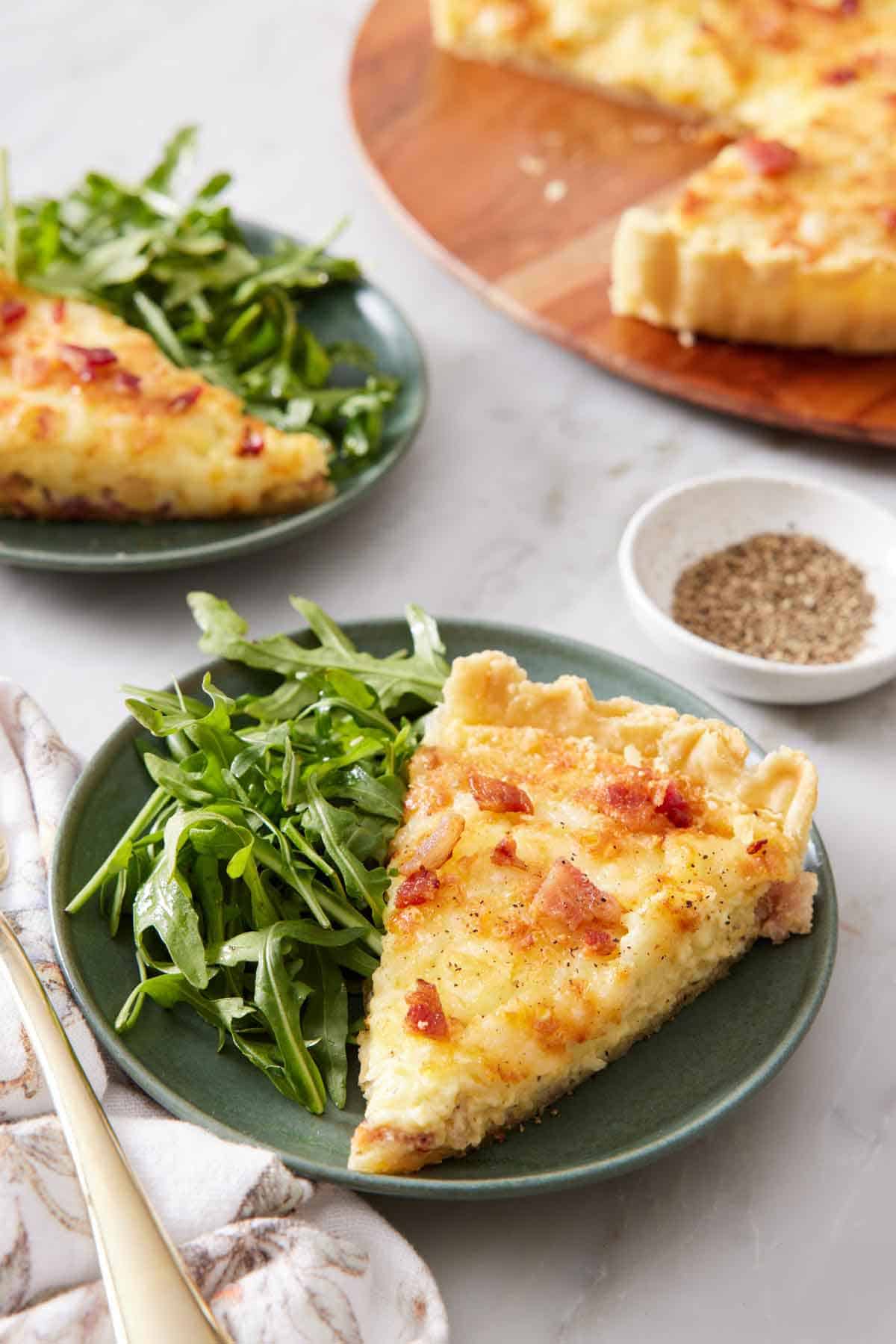
This Quiche Lorraine recipe is the perfect brunch dish for anyone who loves a tasty, easy meal. Imagine crispy bacon and creamy cheese all snuggled up in a golden, flaky pie crust—it's a texture and taste party that you don't want to miss. Plus, it's super versatile, fitting in just as well at a laid-back breakfast as it does at a fancy brunch.
Making the perfect Quiche Lorraine is so much easier than you might think. Whether you're a pro in the kitchen or a home cook wanting to up your game, this guide has all the tips and tricks to nail this classic dish. Before you know it, you'll be dishing out a Quiche Lorraine that'll wow anyone who gets to try a piece.
What You Need to Make this Recipe
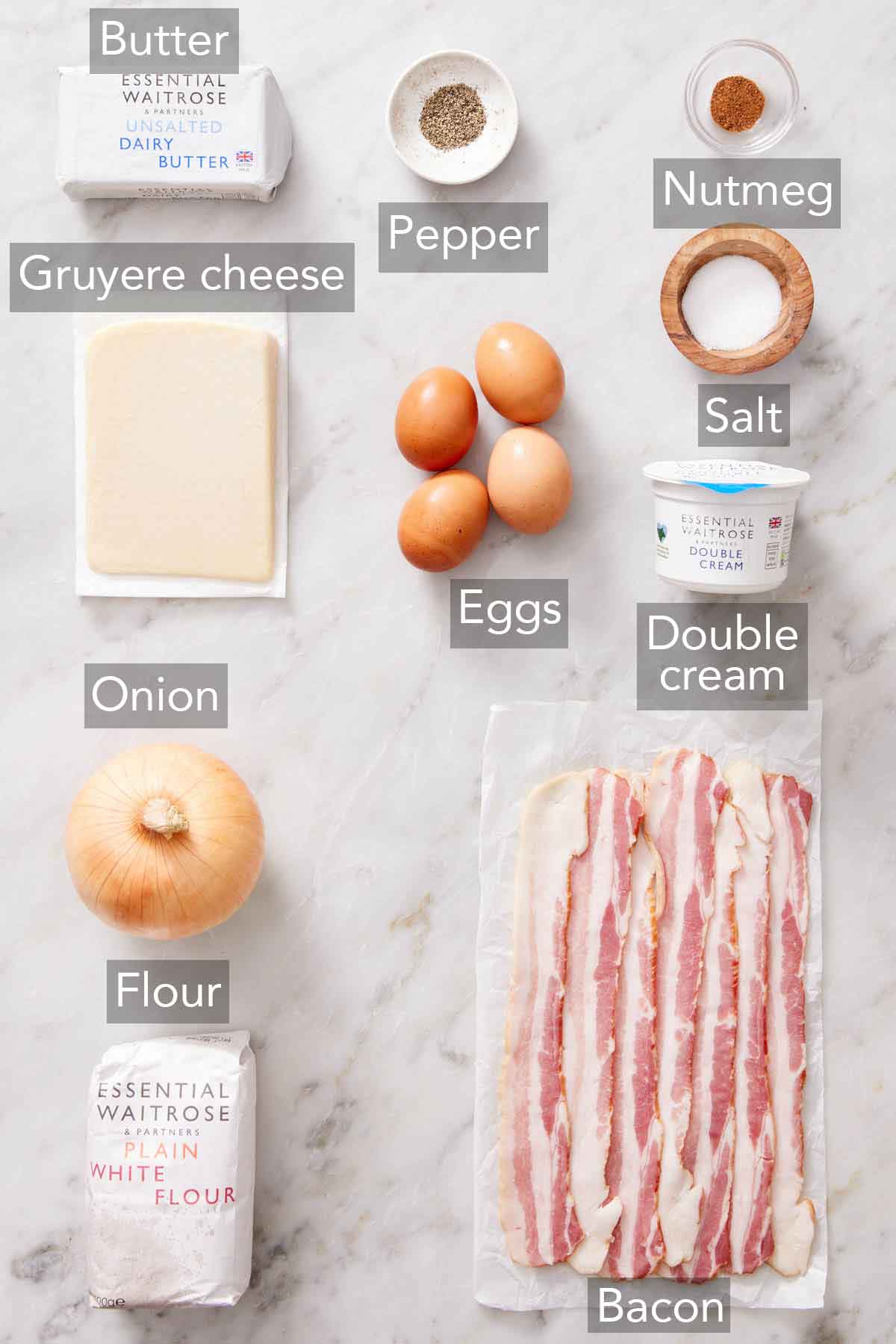
Plain flour — a versatile base ingredient, plain flour is essential for creating the perfect, flaky quiche crust.
Cold butter — essential for achieving a rich, tender pastry; when it steams during baking, cold butter creates those coveted, flaky layers in the crust.
Streaky bacon — adds a smoky, savoury depth to the filling. Its crispy texture contrasts beautifully with the creamy custard.
Small onion — when caramelised, it lends a subtle sweetness and complexity to the quiche, enhancing the flavours of the other ingredients.
Large eggs — the backbone of the custard filling. The eggs help to set the quiche while providing a silky, rich texture.
Double cream (Heavy Cream) — offers a luxurious richness to the quiche, contributing to its velvety and smooth custard.
Grated nutmeg — gives a subtle, warm, nutty flavour that is key to the classic quiche taste.
Gruyere cheese — this Swiss cheese melts beautifully, adding a slightly nutty and creamy taste that just makes the quiche a little more delicious.
How to Make Quiche Lorraine
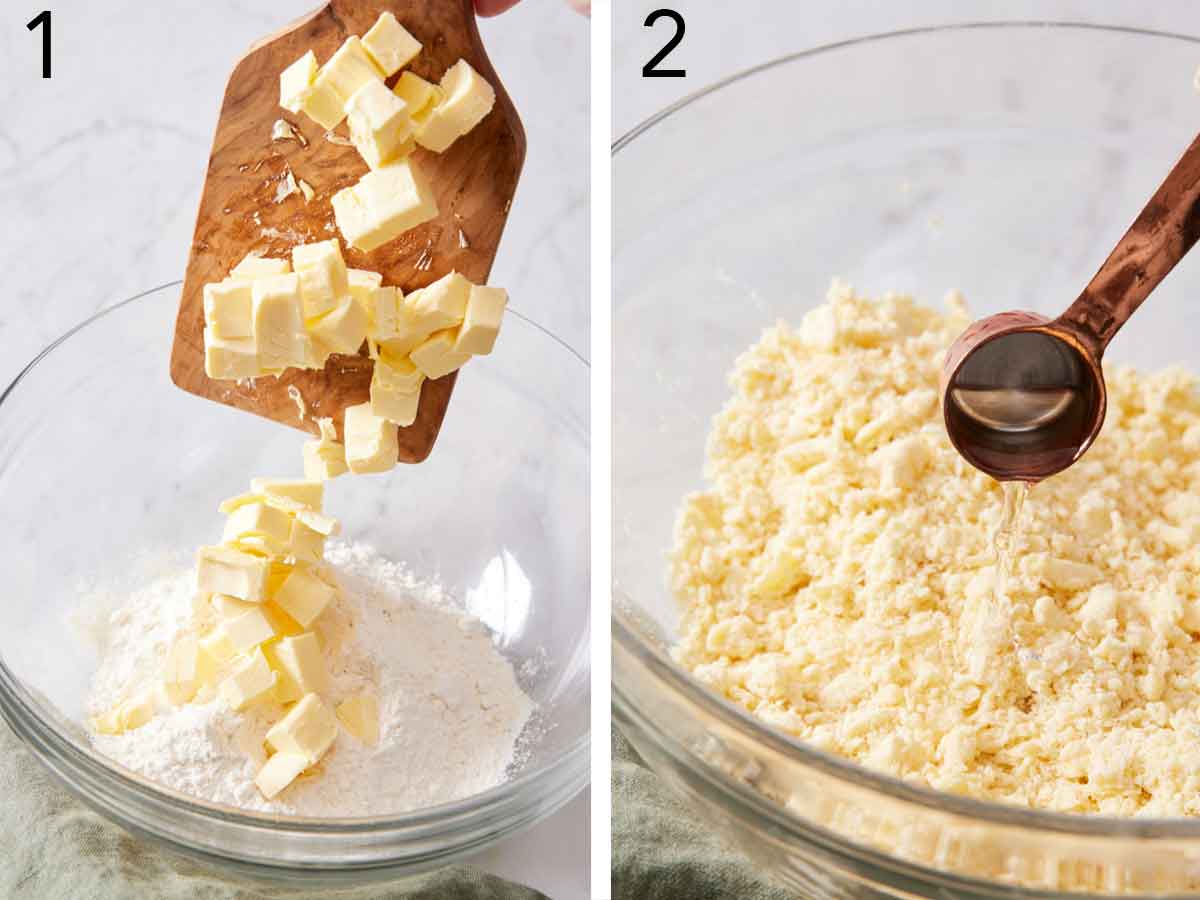
1. In a large bowl, mix the flour and butter by rubbing them together until you get a breadcrumb-like texture.
2. Add cold water (3 to 4 tablespoons should do) till the mix forms a dough. Wrap it up and chill for 30 minutes.
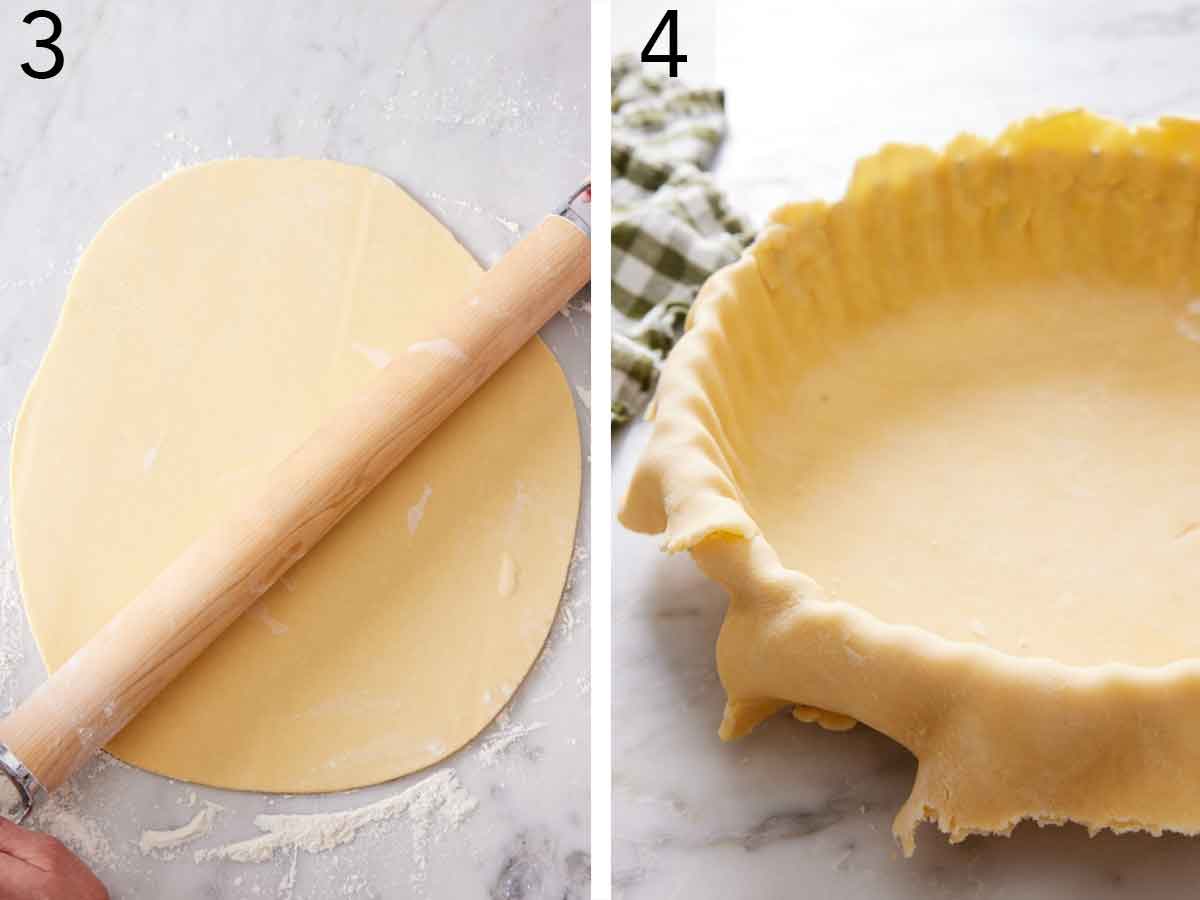
3. Prepping your baking setup, place a 23cm (9") flan tin on a sheet. Roll out your dough on a floured surface so it's thin and fits the tin.
4. Make sure the dough fills in the flan tin properly, with a bit of an overhang. Stick it in the fridge for another 30 minutes.
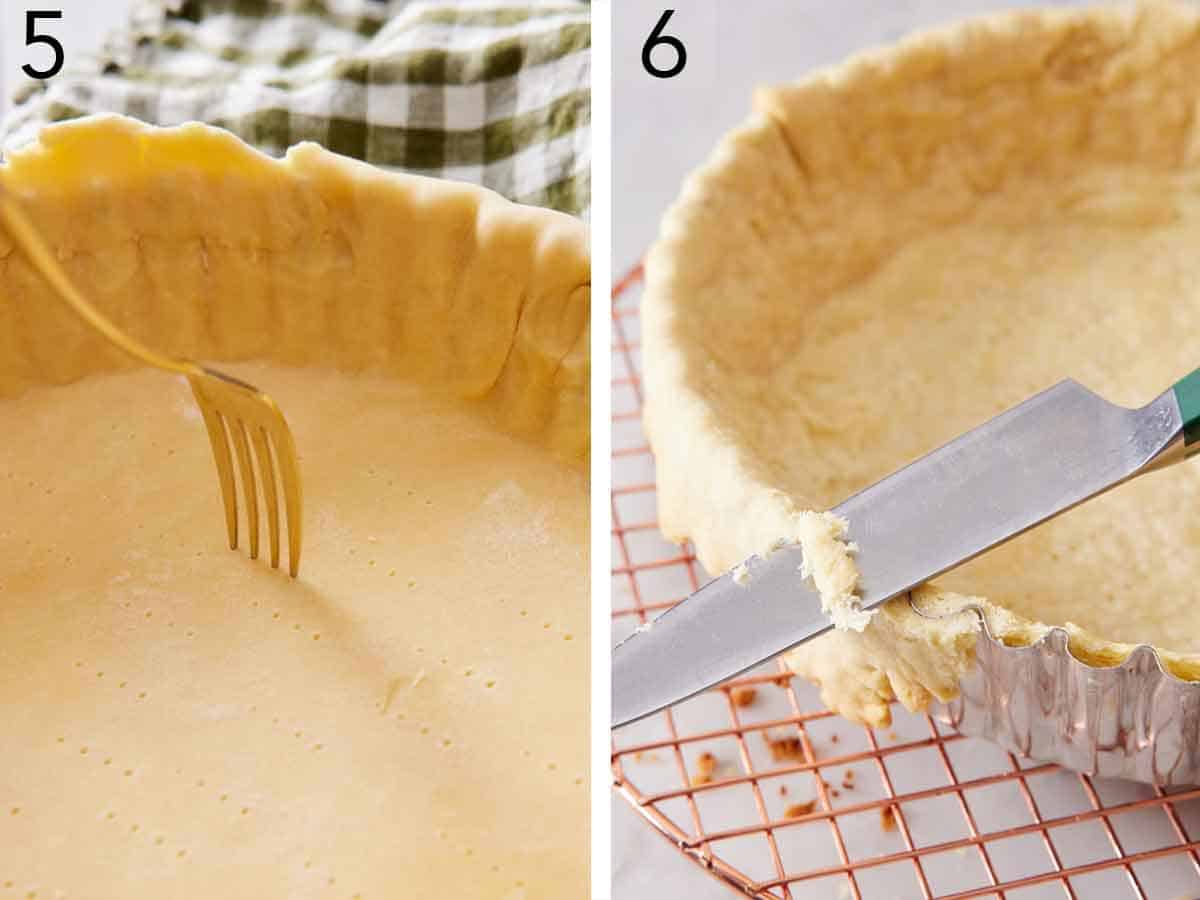
5. Dot the base of your pastry with a fork, lay some baking paper over it, and fill it with baking beans.
6. Bake at 200°C or 180°C fan for 10 minutes. Take out the beans and paper, then bake for another 10 minutes until the base is golden. Trim the excess pastry for neat edges. Lower the oven temperature to 180°C/160°C fan.

7. Fry your bacon in a pan until crispy, about 5 to 8 minutes, then place it on paper towels to drain.
8. Using the bacon fat, cook the onion until it's soft and clear.

9. Next, spread both bacon and onion on the pastry base.
10. Whisk eggs, cream, salt, pepper, and nutmeg in a bowl. Pour the egg mixture into the pastry base and top with cheese. Bake for 20 to 25 minutes. Look for a golden top and a just-set centre. Cool it for 10 minutes outside the oven before serving.
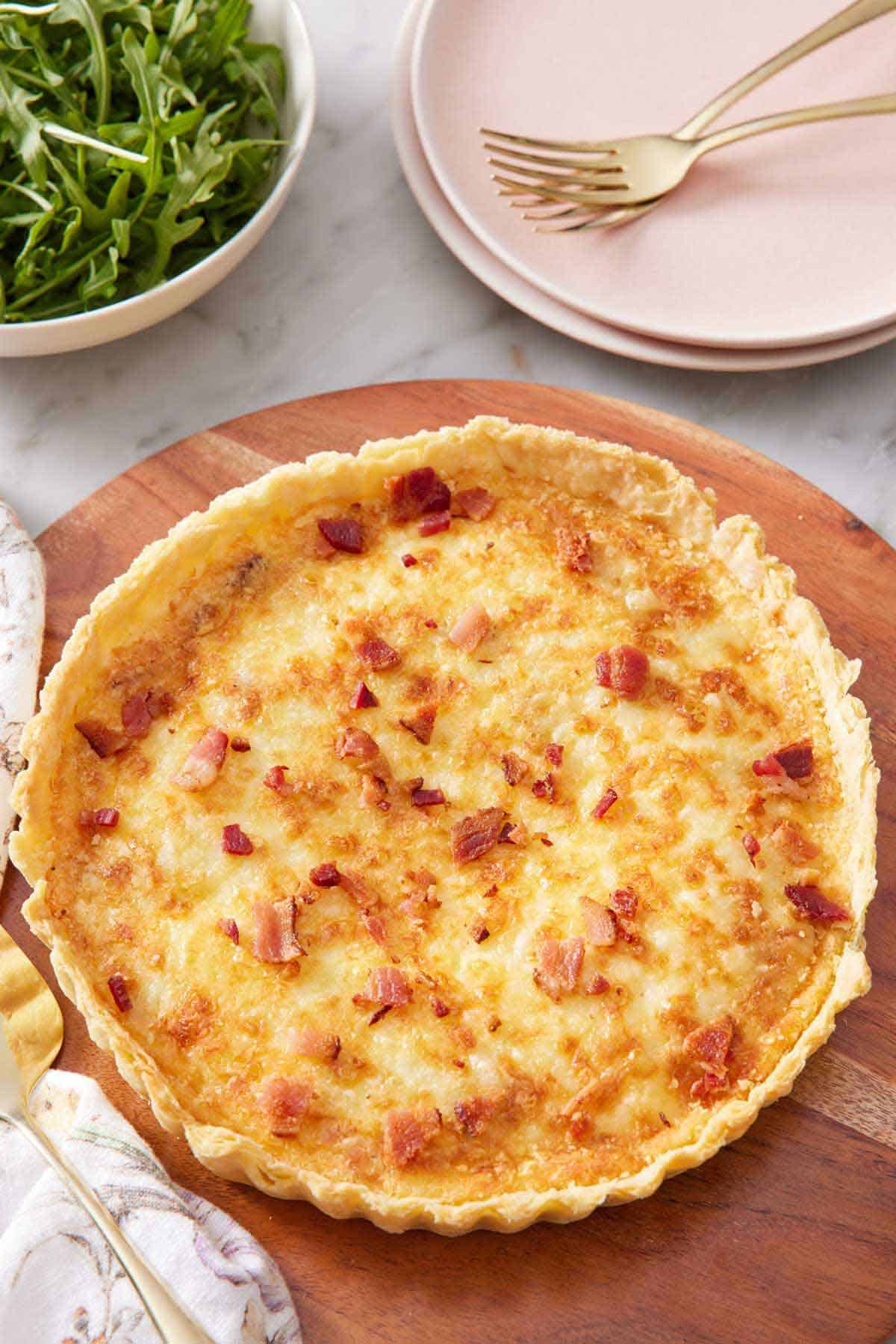
What Is Quiche Lorraine?
Quiche Lorraine is a classic French tart that combines a savoury custard made from eggs and cream with smoked bacon; all encased in a buttery pastry crust. Originating from the Lorraine region of France, this dish has gained global popularity due to its rich flavours and satisfying texture. Adding grated Gruyere cheese enhances its creaminess and depth of flavour, making it a beloved choice for breakfast, brunch, or any meal.
Why You Should Bake A Quiche At A Lower Temperature
Baking a quiche at a lower temperature after the initial crust preparation is critical for achieving the perfectly custardy egg filling. This method ensures that the egg and cream mixture cooks gently and evenly, resulting in a smoother, creamier and softer consistency.
Cooking at too high of a temperature can cause the eggs to overcook, leading to a rubbery and unappealing texture. Starting with a higher temperature is essential for the crust, ensuring it becomes crisp and fully baked, thereby avoiding the dreaded soggy bottom, but drop the temperature before putting the fully assembled quiche back in the oven.
How Do I Know The Quiche Is Done?
To determine if the quiche is done, insert a knife or a skewer into the centre of the quiche; it should come out clean, indicating the custard has set. Additionally, the top of the quiche should appear golden, and the filling should be firm to the touch yet still slightly wobbly in the centre if gently shaken. Allow it to cool for a few minutes before slicing, as it continues to set during cooling.
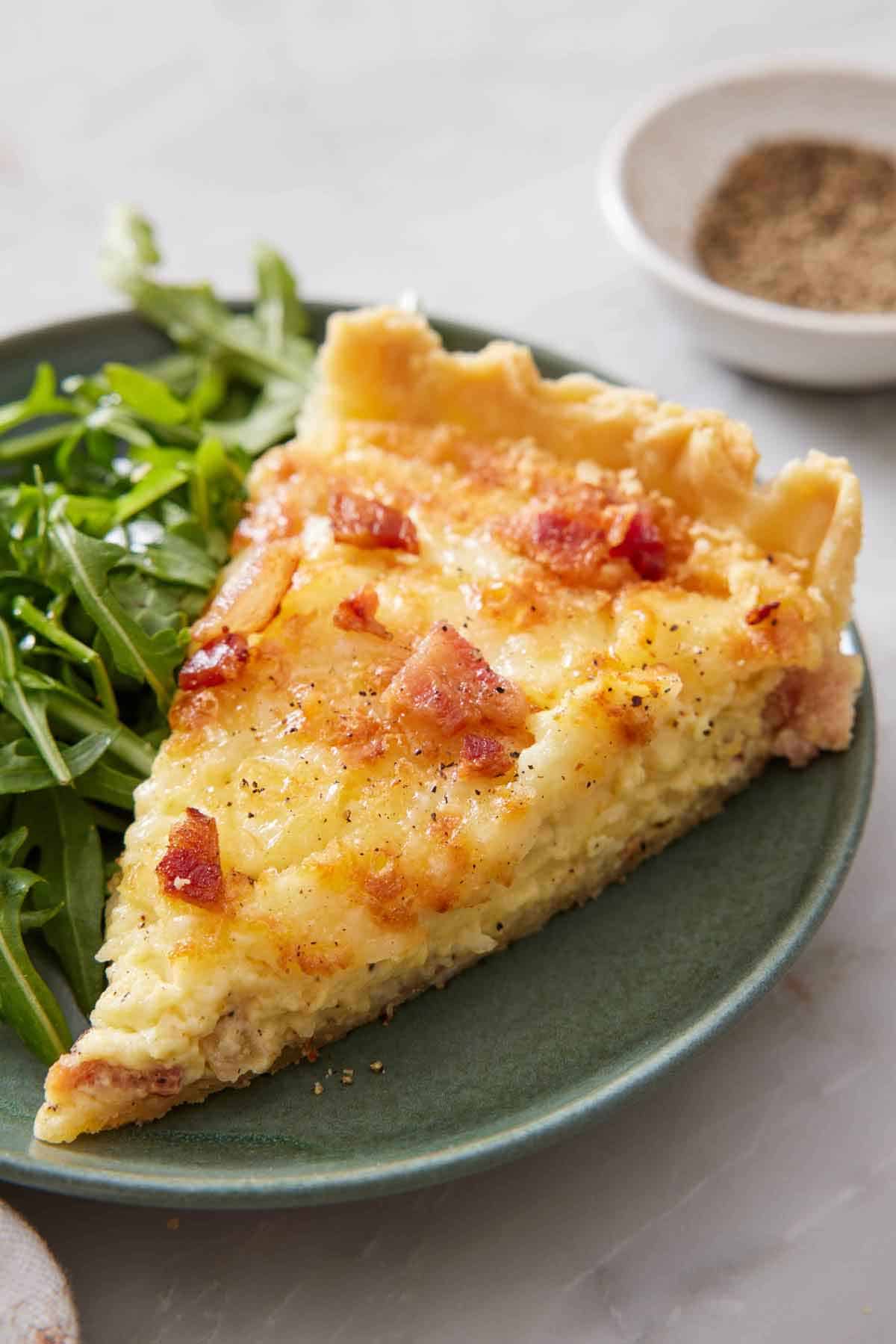
What Is Blind Baking A Crust?
Blind baking a crust, also known as pre-baking, is a baking technique used to partially or fully bake a pie or tart crust before adding the filling. This process is crucial for recipes like quiche, where the filling doesn't need to bake as long as the crust. This step helps to prevent a soggy bottom and ensures that the crust and filling are perfectly cooked at the same time.
How To Prevent A Crust From Cracking
Preventing a crust from cracking requires attention to detail from the beginning. Ensure your dough isn't overmixed, as this can make it tough and prone to cracking. When rolling out your dough, aim for even thickness to avoid thin spots that are more likely to crack during baking.
Chilling the dough before and after rolling it into your tin can also reduce shrinkage and cracking. If cracks appear during blind baking, patch them up with leftover dough before adding your filling. Lastly, avoid overbaking, as excessive heat can dry out the crust, leading to cracks.
Can I Make This Quiche Crustless?
Yes! For a crustless quiche, opt for a well-greased 20cm (8") round tin without a removable bottom. This alteration requires slightly adjusting the baking time, as the absence of crust leads to a quicker custard cooking process. Start baking at 180°C/160°C fan and carefully monitor the quiche as it bakes, aiming for a similar golden top and just-set centre. This should take about 20 minutes.
Save Time And Use A Frozen Crust
Utilising a frozen crust for your Quiche Lorraine can significantly streamline the preparation process, making it an excellent option for those short on time or seeking convenience. Simply blind bake the crust according to the package instructions, and then proceed with the recipe as directed for making the filling and finishing the bake.
Pro Tips for Making this Recipe
- Swap out the cheese. Experiment with different types of cheese for varying flavours. Goat cheese, cheddar, or even a spicy pepper jack can put a new twist on the classic Quiche Lorraine.
- To make a vegetarian version, skip the bacon and add sautéed mushrooms, spinach, or asparagus for a hearty vegetarian alternative.
- Customise the fillings to suit your taste or the season. Be creative with the fillings. Try adding sun-dried tomatoes, roasted red peppers, or caramelised onions for additional flavour layers. Seasonal vegetables can also refresh the dish throughout the year.

Frequently Asked Questions
Yes, Quiche Lorraine can be made ahead of time. It can be fully baked, cooled, and then stored in the refrigerator for up to three days. When ready to serve, reheat it in the oven at a moderate temperature to maintain the best texture, or microwave a single slice for fast reheating. This makes it a convenient and tasty option for meal planning or for serving at gatherings.
After baking and cooling the quiche, wrap it tightly in plastic wrap, followed by a layer of aluminium foil. It can be stored in the freezer for up to three months. To serve, thaw the quiche overnight in the refrigerator and then reheat it in the oven for 20 minutes or until heated through.
You can use milk instead of double cream to make a lighter version of this creamy Quiche Lorraine. However, keep in mind that replacing double cream with milk will change the texture and firmness of the custard, making it less rich and creamy. For best results, consider using full-fat or semi-skimmed milk to maintain some of the custard's luxurious texture.
If you've tried this Quiche Lorraine recipe, then don't forget to rate it and let me know how you got on in the comments below. I love hearing from you!
Quiche Lorraine Recipe
Equipment
- 23cm flan tin
- Mixing Bowls
- Frying pan
Ingredients
Pastry:
- 200 grams plain flour
- 125 grams cold butter cut into small pieces
Filling:
- 150 grams streaky bacon chopped (about 7 slices)
- ½ small onion chopped
- 4 large eggs
- 240 milliliters double cream
- ¼ teaspoon salt
- ¼ teaspoon freshly ground black pepper
- Pinch of grated nutmeg
- 100 grams grated gruyere cheese
Instructions
For the Pastry:
- Place the flour in a large bowl. Add the butter and rub it into the flour until the mixture is like breadcrumbs. Stir in enough cold water until the crumbs come together into a firm dough (3 to 4 tablespoons). Wrap and let it rest in the fridge for 30 minutes.
- Place a 23cm (9”) loose-bottom fluted flan tin on a baking sheet. On a lightly floured surface, roll out the dough into a thin circle. and line the tin with the pastry. Press the pastry into the flutes and side of the tin, letting the excess pastry hang over the edges. Chill again for 30 minutes.
- Meanwhile, preheat the oven to 200°C / 180°C fan. Prick the chilled pastry bottom all over with a fork, then line the pastry with baking paper and fill with baking beans.
- Bake for 10 minutes. Carefully remove the baking paper and beans and return the pastry to the oven. Bake for another 10 minutes or until lightly browned on the base. Trim off the overhang to make a clean edge.
- Reduce the oven temperature to 180°C/ 160°C fan.
For the Filling:
- Heat a small frying pan over medium heat. Add the bacon and fry until the fat renders and the bacon is crispy, 5 to 8 minutes. Remove the bacon, leaving the fat in the pan, and drain on paper towels.
- Add the onion and cook until softened and translucent, about 5 minutes. Scatter the bacon and onions into the bottom of the pastry case.
- In a large bowl, whisk together the eggs, cream, salt, pepper, and nutmeg. Pour the filling into the pastry case and sprinkle the cheese on top.
- Bake for 20 to 25 minutes or until the top of the filing is golden and the center is softly set. Let the quiche cool for 10 minutes before removing it from the tin. Serve warm.
Notes
- Swap out the cheese. Experiment with different types of cheese for varying flavours. Goat cheese, cheddar, or even a spicy pepper jack can put a new twist on the classic Quiche Lorraine.
- To make a vegetarian version, skip the bacon and add sautéed mushrooms, spinach, or asparagus for a hearty vegetarian alternative.
- Customise the fillings to suit your taste or the season. Be creative with the fillings. Try adding sun-dried tomatoes, roasted red peppers, or caramelised onions for additional flavour layers. Seasonal vegetables can also refresh the dish throughout the year.











Leave a Reply